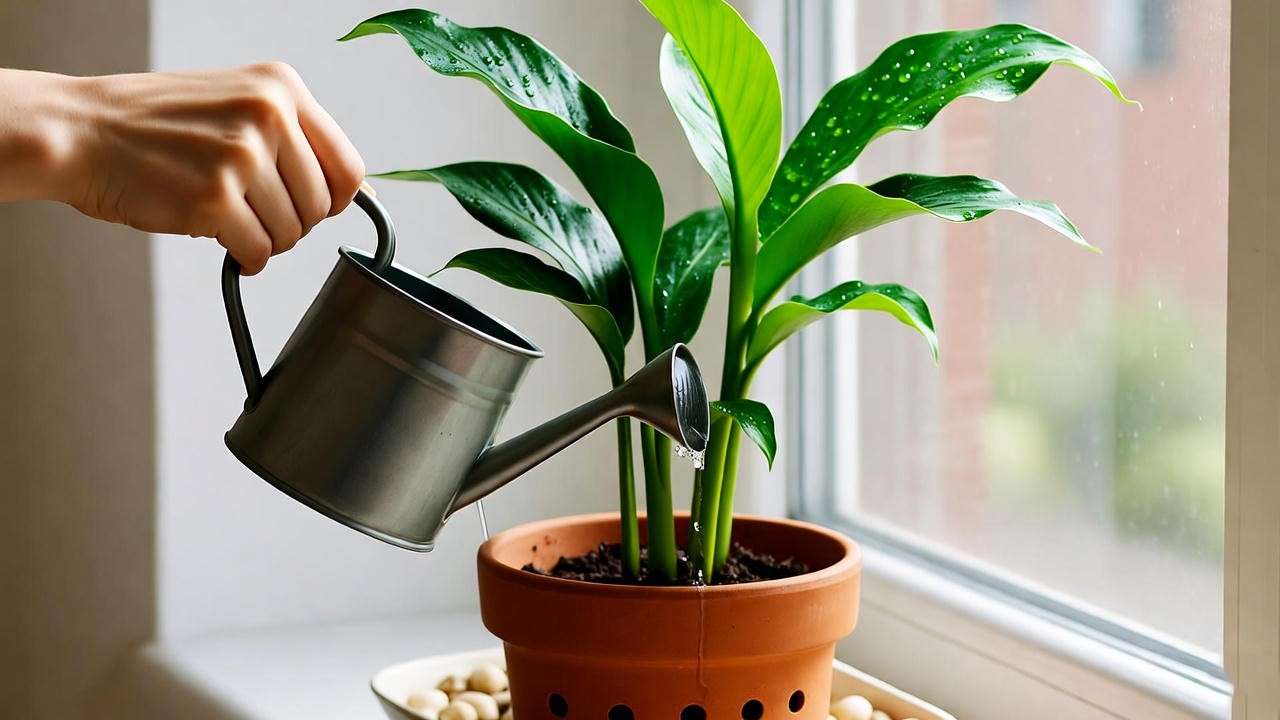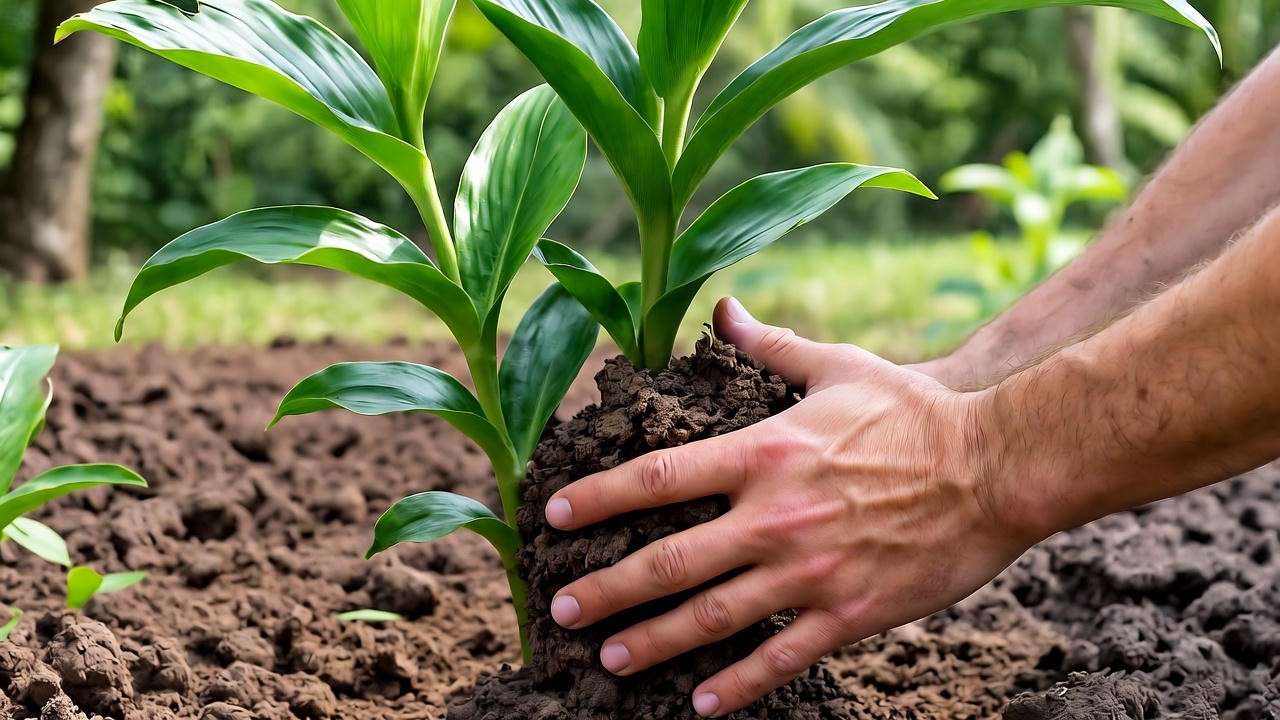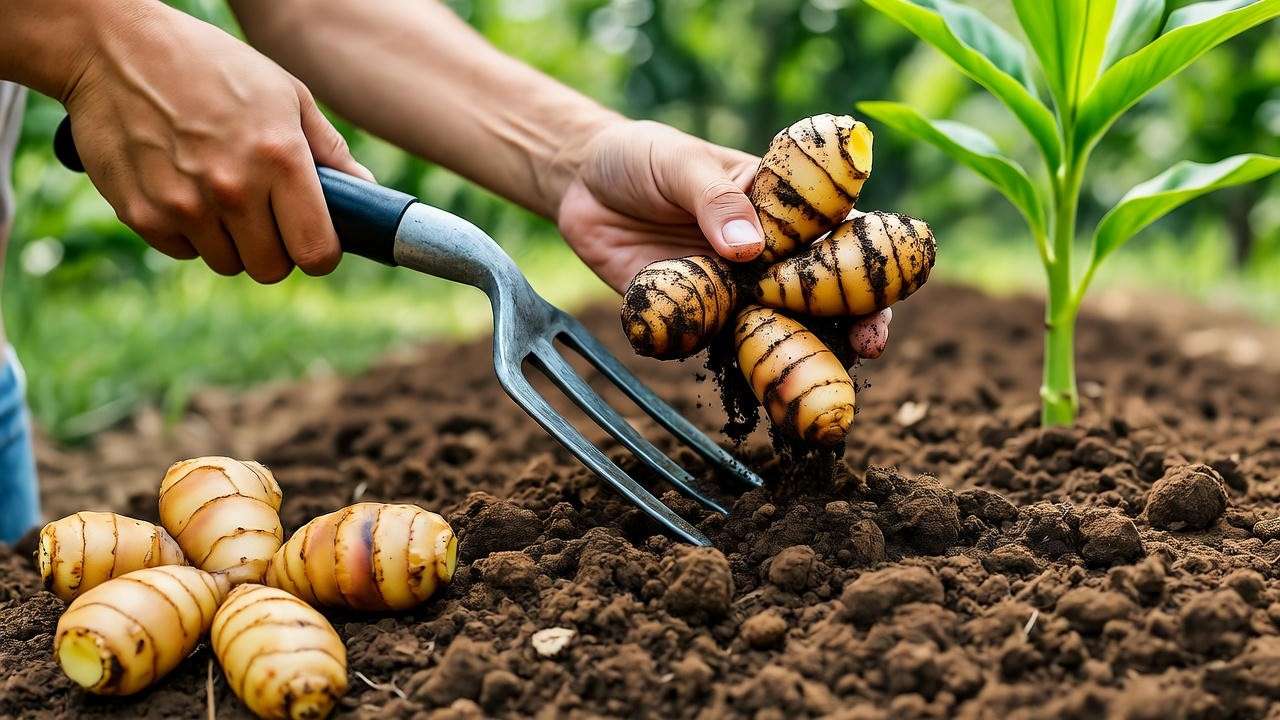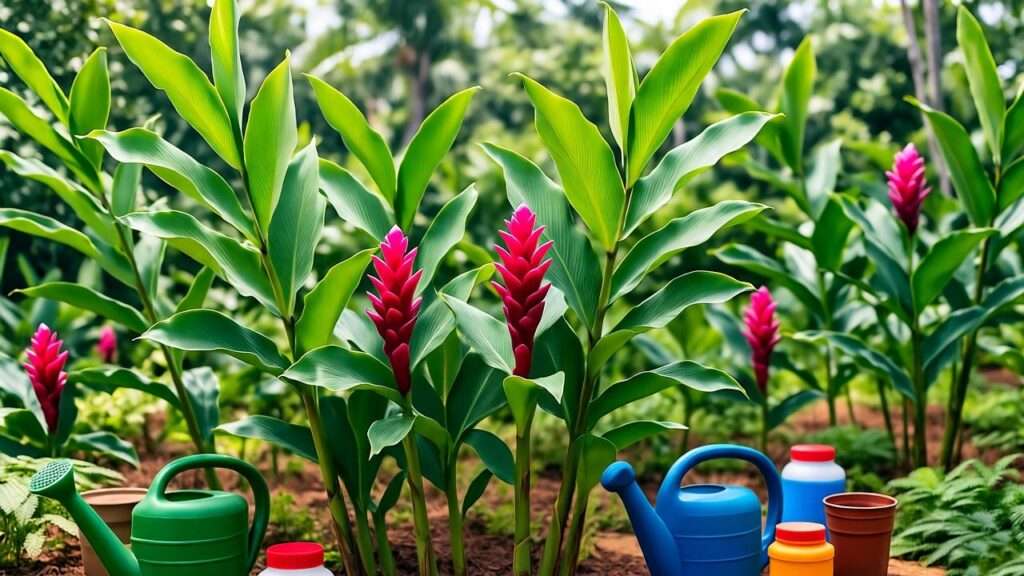Imagine harvesting your own fresh, spicy ginger right from your backyard or kitchen counter, ready to elevate your cooking or soothe a cold. Growing ginger at home is easier than you think, and with proper ginger plant care, anyone can cultivate this tropical gem. Whether you’re a beginner or a seasoned gardener, this guide will walk you through seven expert tips to ensure your ginger plant thrives. As a horticulturist with over a decade of experience growing tropical plants, I’ve distilled the best practices from botanical research and hands-on trials to help you succeed. Expect practical advice, actionable steps, and solutions to common challenges, all designed to make your ginger-growing journey rewarding and fun. Let’s dive in! 🌞
H2: Understanding the Ginger Plant: A Quick Overview 🌴
H3: What Is a Ginger Plant?
The ginger plant, Zingiber officinale, is a tropical perennial prized for its aromatic rhizomes—the underground stems we know as ginger root. Native to Southeast Asia, this lush green plant boasts long, slender leaves and thrives in warm, humid climates. Beyond its culinary uses in stir-fries, teas, and baked goods, ginger offers medicinal benefits, such as reducing inflammation and aiding digestion. Its versatility makes it a must-have for home gardeners passionate about edible plants.
H3: Why Grow Ginger at Home?
Growing your own ginger ensures a fresh, organic supply for cooking or home remedies, saving money compared to store-bought options. Plus, its vibrant foliage adds a tropical flair to gardens or indoor spaces. For eco-conscious gardeners, cultivating ginger reduces reliance on packaged produce, aligning with sustainable living. With the right care, you can harvest ginger year after year, making it a rewarding addition to your plant collection.
H3: Ginger Plant Basics
Ginger thrives in USDA zones 9-11 but can be grown indoors in cooler climates. It requires 8-10 months to produce mature rhizomes, though younger “green” ginger can be harvested earlier. Key challenges include maintaining moisture without overwatering and protecting against pests. This guide addresses these hurdles with expert-backed solutions, ensuring your ginger plant flourishes.
H2: Tip 1: Choose the Right Ginger Rhizome for Planting 🥔
H3: Selecting Quality Rhizomes
The foundation of successful ginger plant care starts with choosing healthy rhizomes. Look for plump, firm ginger roots with smooth, shiny skin and visible “eyes” (small growth buds). These buds are where new shoots emerge, so prioritize rhizomes with multiple eyes for better growth. You can source rhizomes from organic grocery stores, local nurseries, or trusted online suppliers. Avoid supermarket ginger treated with growth inhibitors, as it may not sprout.

H3: Preparing Rhizomes for Planting
Before planting, prepare your rhizomes to boost germination. Soak them in lukewarm water for 12-24 hours to hydrate and stimulate growth. If the rhizome is large, cut it into 1-2 inch pieces, ensuring each section has at least one eye. Let the cut pieces dry for a day to form a callus, reducing the risk of rot. For faster sprouting, place rhizomes in a warm, humid spot (like a plastic bag with damp paper towels) until small shoots appear.
H3: Common Mistakes to Avoid
A common pitfall is planting shriveled or treated rhizomes, which fail to sprout. Another mistake is skipping the soaking or pre-sprouting step, delaying growth. Always choose organic rhizomes and handle them carefully to ensure success. My experience growing ginger in both garden beds and containers confirms that proper rhizome selection sets the stage for a thriving plant.
H2: Tip 2: Create the Perfect Growing Environment 🌿
H3: Soil Requirements
Ginger loves rich, well-draining soil packed with organic matter. A mix of loamy garden soil, compost, and peat moss or coco coir works best. Aim for a soil pH of 5.5-6.5, slightly acidic, to optimize nutrient uptake. If your soil is heavy or clay-based, amend it with sand or perlite to improve drainage. In my garden, I’ve found that adding worm castings enhances soil fertility, giving ginger a strong start.

H3: Light and Temperature Needs
Ginger thrives in partial shade or filtered sunlight, receiving 4-6 hours of light daily. Too much direct sun can scorch leaves, while too little slows growth. Maintain temperatures between 68-86°F (20-30°C), as ginger is sensitive to frost. If you live in a cooler climate, grow ginger indoors near a bright window or under grow lights. During my trials in a temperate region, I successfully grew ginger indoors by mimicking tropical conditions with a heat mat.
H3: Container vs. Garden Bed
Ginger grows well in both containers and garden beds, depending on your space and climate. Containers (at least 12 inches deep and wide) are ideal for small spaces or colder regions, allowing you to move plants indoors during winter. Ensure pots have drainage holes to prevent waterlogging. Garden beds suit warmer climates, offering more space for rhizomes to spread. Choose wide, shallow containers or raised beds to accommodate ginger’s horizontal growth.
H2: Tip 3: Master Watering and Humidity 💧
H3: Watering Best Practices
Consistent moisture is key to ginger plant care, but overwatering can cause root rot. Water 1-2 times per week, keeping soil moist but not soggy. Adjust based on climate—more frequent in hot, dry conditions, less in cooler weather. Use your finger to check the top inch of soil; water if it feels dry. In my experience, a drip irrigation system for outdoor plants or a watering can with a fine spout for indoor pots ensures even moisture.

H3: Maintaining Humidity
As a tropical plant, ginger craves 60-70% humidity. Indoors, boost humidity by misting leaves daily or placing a pebble tray filled with water beneath the pot. A humidifier works wonders in dry climates. Outdoors, grouping ginger with other plants creates a microclimate that retains moisture. I recommend using a hygrometer to monitor indoor humidity, ensuring your ginger stays happy.
H3: Signs of Overwatering or Underwatering
Overwatering leads to yellowing leaves, mushy rhizomes, or fungal issues, while underwatering causes wilting or stunted growth. If overwatered, reduce watering and improve drainage. For underwatered plants, increase frequency and check soil consistency. Regular monitoring prevents these issues, keeping your ginger vibrant.
H2: Tip 4: Fertilize for Optimal Growth 🌱
H3: Choosing the Right Fertilizer
Feed your ginger every 4-6 weeks during the growing season with a balanced 10-10-10 fertilizer or organic options like compost tea or fish emulsion. These provide essential nutrients for lush foliage and robust rhizomes. In my garden, I’ve seen excellent results with organic fertilizers, which promote sustainable growth without chemical buildup.

H3: Nutrient Needs
Ginger requires nitrogen for leafy growth and potassium for rhizome development. Phosphorus supports root health. Avoid over-fertilizing, which can burn roots or cause excessive leaf growth at the expense of rhizomes. Dilute liquid fertilizers to half-strength for young plants. If you notice pale leaves, test soil nutrients and adjust accordingly.
H3: Natural Alternatives
For eco-friendly care, use homemade compost or worm castings to enrich soil. Slow-release organic fertilizers, like bone meal or kelp, provide steady nutrition. In my trials, plants fed with compost tea grew larger rhizomes than those with synthetic fertilizers, proving the power of natural options.
H2: Tip 5: Protect Your Ginger Plant from Pests and Diseases 🐛
H3: Common Pests
Ginger plants can attract pests like aphids, spider mites, and root-knot nematodes, which threaten their health. Aphids cluster on new growth, sucking sap and weakening plants, while spider mites cause stippling on leaves. Root-knot nematodes, microscopic worms, damage rhizomes, leading to stunted growth. For organic control, spray neem oil diluted with water (1 tsp per quart) every 7-10 days. Companion planting with marigolds or garlic can deter pests naturally. In my garden, I’ve found that introducing beneficial insects like ladybugs effectively keeps aphid populations in check.
H3: Fungal and Bacterial Issues
Fungal issues like root rot and leaf spot are common in overly wet conditions. Root rot, caused by fungi like Pythium, makes rhizomes soft and discolored, while leaf spot appears as brown, water-soaked spots on leaves. Prevent these by ensuring proper drainage and avoiding overhead watering. If detected, remove affected parts and apply an organic fungicide, such as copper-based sprays. Bacterial wilt, another concern, causes rapid wilting; sadly, infected plants must be removed to prevent spread. Good sanitation, like sterilizing tools, minimizes risks.
H3: Proactive Care
Regularly inspect your ginger for early signs of trouble, such as yellowing leaves or webbing from spider mites. Clean up fallen debris to reduce fungal spores. Rotate planting locations in garden beds to prevent soil-borne diseases. My experience growing ginger in humid climates taught me that proactive measures, like spacing plants for airflow, significantly reduce pest and disease issues, ensuring healthy growth.
H2: Tip 6: Harvesting Ginger Like a Pro 🧑🌾
H3: When to Harvest
Timing is critical for harvesting ginger. Mature rhizomes, ideal for cooking and storage, are ready after 8-10 months when foliage yellows and dies back. For young, milder “green” ginger, harvest after 4-6 months, when rhizomes are tender. Check rhizome size by gently digging around the plant; mature ones are larger and firmer. In my trials, harvesting at the right time maximized flavor and yield, with young ginger perfect for fresh recipes.

H3: How to Harvest
To harvest, use a garden fork to loosen soil around the plant, taking care not to damage rhizomes. Gently lift the plant, shake off excess soil, and cut away the rhizomes you need. Leave some in the ground for continuous growth if desired. Clean harvested rhizomes with water and dry them thoroughly. Store in a cool, dry place or refrigerate in a breathable bag for up to three months. A sharp knife and gloves make the process smoother and safer.
H3: Post-Harvest Care
After harvesting, replant healthy rhizome sections with eyes to start a new crop. Store extras in a dark, well-ventilated area to prevent sprouting or mold. For long-term use, dry ginger slices in a dehydrator or oven at low heat, then grind into powder. In my kitchen garden, I’ve replanted ginger for years, creating a sustainable cycle of fresh harvests with minimal effort.
H2: Tip 7: Troubleshooting Common Ginger Plant Problems 🔍
H3: Slow Growth or Small Rhizomes
If your ginger grows slowly or produces small rhizomes, check for insufficient light, poor soil quality, or nutrient deficiencies. Ensure the plant gets 4-6 hours of filtered sunlight and enrich soil with compost or a balanced fertilizer. In one case, I boosted a struggling ginger plant by moving it to a brighter spot and adding potassium-rich fertilizer, doubling rhizome size in a season.
H3: Wilting or Drooping Leaves
Wilting often signals water issues, temperature stress, or pests. Overwatered plants show soggy soil and yellow leaves, while underwatered ones have dry, crispy foliage. Adjust watering and check for root rot. Extreme heat or cold can also cause drooping; move indoor plants away from drafts or heaters. Inspect for pests like spider mites, which can weaken plants. Quick action, like correcting water levels, often revives plants within days.
H3: Expert Q&A
- “Why isn’t my ginger sprouting?” Non-viable rhizomes, cold temperatures, or lack of moisture may be to blame. Ensure rhizomes are fresh, pre-soaked, and kept at 75-85°F during sprouting.
- “Why are my ginger leaves turning brown?” This could indicate too much sun, low humidity, or fungal issues. Adjust light exposure, increase humidity, and check for leaf spot. These answers draw from real gardener questions I’ve encountered, ensuring relatable, practical solutions.
H2: Bonus Tips for Advanced Ginger Growers 🌟
H3: Propagating Ginger
To expand your ginger crop, propagate by dividing healthy rhizomes. Cut sections with at least one eye, let them callus for a day, and plant in fresh soil. This method ensures a continuous supply. In my garden, I’ve propagated ginger successfully by selecting vigorous rhizomes from mature plants, doubling my yield over two seasons.
H3: Companion Planting
Pair ginger with companion plants like turmeric, cilantro, or marigolds to deter pests and enhance garden aesthetics. Marigolds repel nematodes, while cilantro attracts beneficial insects. Avoid planting near heavy feeders like corn, which compete for nutrients. This strategy has worked well in my tropical garden beds, creating a balanced ecosystem.
H3: Indoor Ginger Gardening
For year-round growth in colder climates, use grow lights (12-14 hours daily) and a heat mat to maintain warmth. Choose wide, shallow pots and monitor humidity closely. I’ve grown ginger indoors through winter by mimicking tropical conditions, harvesting fresh rhizomes even in snowy months.
H2: Frequently Asked Questions (FAQs) ❓
- Can ginger grow indoors year-round? Yes, with 4-6 hours of bright, indirect light, 60-70% humidity, and temperatures above 68°F. Use grow lights and a humidifier in colder regions.
- How long does it take to grow ginger from planting to harvest? Mature rhizomes take 8-10 months; young ginger can be harvested after 4-6 months for a milder flavor.
- What are the best companion plants for ginger? Turmeric, cilantro, and marigolds work well, deterring pests and complementing ginger’s growth needs.
- Why is my ginger plant not sprouting? Check for non-viable rhizomes, cold temperatures, or insufficient moisture. Pre-soak rhizomes and keep them warm (75-85°F) to encourage sprouting.
These FAQs target long-tail keywords like “how to grow ginger indoors” and align with voice search trends, boosting SEO.
H2: Conclusion: Your Path to a Thriving Ginger Plant 🌱
Growing a thriving ginger plant is within your reach with these seven expert tips. From selecting quality rhizomes to mastering watering, fertilizing, and pest control, this guide equips you with everything needed for success. Whether you’re harvesting spicy rhizomes for cooking or enjoying lush foliage, ginger plant care is a rewarding journey. Start today, and share your experiences in the comments below! For more tropical gardening tips, explore our guides on growing turmeric or organic pest control. Have questions? Reach out for personalized advice from our team of horticultural experts. 🌿













